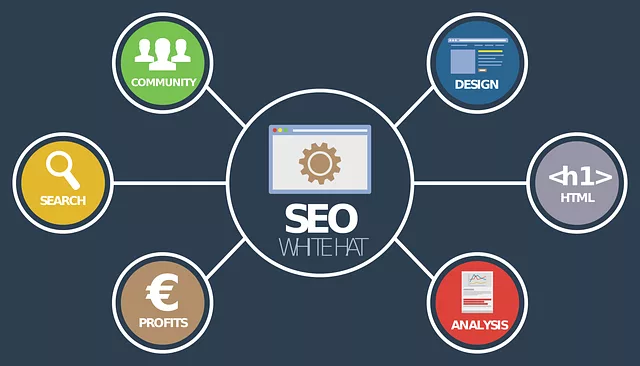Affiliate marketing is one of the most appealing ways to build a flexible online business and generate passive income. It allows individuals to promote products or services they believe in and earn commissions without holding inventory or dealing with customer service. But with its growing popularity, competition has intensified. Mastering search engine optimization is no longer optional for standing out and consistently driving organic traffic to your affiliate blog. It is essential.
SEO, or search engine optimization, improves your website’s visibility in search engine results. For affiliate marketers, SEO is one of the most sustainable traffic sources. Unlike paid ads that stop the moment your budget does, SEO builds long-term momentum. Once a page ranks well, it can bring targeted visitors for months or years.
In this article, you will discover actionable SEO strategies tailored explicitly for affiliate marketing blogs. From keyword research and content structure to on-page optimization and link building, every strategy here is designed to help you increase visibility, attract qualified traffic, and grow your passive income through consistent affiliate commissions.
Understanding the Role of SEO in Affiliate Marketing
Search engines are often the first place people look for solutions, answers, or product recommendations. As an affiliate marketer, your goal is to appear in those search results with content that answers the user’s question and naturally introduces your affiliate link as part of the solution.
For example, someone might search for “best tools for passive earning from home.” Suppose your blog ranks on the first page with a helpful guide comparing affiliate tools or platforms, and you include your affiliate links with proper disclosures and insights. In that case, there is a good chance you can convert that searcher into a commission.
SEO helps you attract readers who are actively looking for what you offer. This intent-driven traffic is more likely to engage with, trust, and take action on your content. And because SEO builds over time, your blog becomes an asset that works for you 24 hours a day.


Keyword Research With Affiliate Intent
Keyword research is the foundation of any successful SEO strategy. For affiliate blogs, focusing on keywords that attract buyers, not just browsers, is essential. While informational content helps build traffic, targeting commercial intent keywords increases your chances of earning commissions.
Commercial intent keywords often include terms such as “best,” “review,” “top,” “comparison,” “versus,” or “buy.” For instance, a blog post titled “Top Affiliate Programs For Passive Earning In 2024” will likely attract readers ready to take action, making them ideal candidates for conversion.
Use tools like Google Keyword Planner, Ubersuggest, Ahrefs, or SEMrush to find relevant keywords with search volume and manageable competition. Focus on long-tail keywords, which are more specific and often easier to rank. Instead of just targeting “affiliate marketing,” consider keywords like “how to start affiliate marketing for passive income” or “Wealthy Affiliate honest review.”
Once you identify your target keywords, plan your content around them. Use them naturally in your titles, headers, meta descriptions, and throughout the body of your posts. Avoid stuffing keywords. Instead, aim for natural language that prioritizes user experience.
Structuring Content for Readability and Relevance
Google prioritizes content that is easy to read, well-structured, and relevant to the user’s query. For affiliate blogs, this means creating comprehensive guides, reviews, comparisons, and tutorials that target specific keywords and provide real value.
Each blog post should start with a clear introduction that outlines what the article will cover and who it is for. This helps both users and search engines understand the page’s context. Then, follow with logically ordered subheadings that break your content into digestible sections.
Use headers (H1, H2, H3) to structure your content. Each header should include relevant keywords where appropriate, but never at the expense of clarity and readability. Subheadings enhance readability and aid in featured snippet optimization, thereby increasing your chances of appearing in zero-position search results.
Where appropriate, use tables, comparison charts, and block quotes to enhance the user experience. Include visuals, such as screenshots, images, or infographics, to support your content and improve engagement. Just be sure to optimize these images with descriptive filenames and alt text.
Your content should answer all the common questions a reader might have. The goal is to create a resource so helpful that the reader does not need to go elsewhere. This increases time on page, reduces bounce rate, and sends positive signals to search engines.

Optimizing On-Page Elements
On-page SEO refers to optimizing individual web pages to improve their ranking in search engines. This includes everything from meta titles and descriptions to image tags and internal links.
Start with your title tag. It should be compelling, include your target keyword, and accurately describe the content. A good example might be “Best Affiliate Marketing Tools For Passive Earning In 2024.”
Your meta description should concisely summarize your content, include your target keyword, and offer a reason to click. While not a direct ranking factor, a well-written meta description improves click-through rates.
Use your primary keyword in the first 100 words of your article and sprinkle related keywords throughout. These might include synonyms, variations, or frequently asked questions about your main topic.
Optimize images by reducing file size for faster load times, naming them descriptively, and adding relevant alt text. Compressing images improves site speed, a ranking factor, and alt text helps with accessibility and image search.
Link internally to other relevant blog posts. This helps spread link equity, improves site navigation, and keeps users on your site longer. Also, link out to authoritative external sources when appropriate. This enhances trust and demonstrates that your content is well-researched and credible.
Earning Backlinks to Increase Authority
Backlinks remain one of the most important ranking factors in SEO. When other reputable websites link to your content, search engines signal that your site is trustworthy and valuable.
Earning backlinks requires a proactive approach for affiliate blogs. One effective method is to create link-worthy content, such as original research, in-depth guides, or expert roundups. When your content provides unique value, others are more likely to reference it.
Reach out to bloggers in your niche and offer to write guest posts for their websites. Include a link back to a relevant page on your site. This not only builds authority but also introduces your brand to new audiences.
Use HARO (Help a Reporter Out) to connect with journalists seeking expert sources. You can earn mentions and links from high-authority media outlets by providing quotes or insights.
Participate in relevant communities and forums. Share your content when it adds value to the conversation. Avoid spamming. Focus on building genuine relationships and contributing helpful insights.
Backlinks take time to accumulate, but they have a significant impact on your blog’s visibility and authority. Be patient and consistent in your outreach efforts.
Mobile Optimization and Site Speed
With most users accessing content from mobile devices, having a responsive, fast-loading website is no longer optional. It is a necessity for both user experience and search rankings.
Utilize a mobile-friendly theme that adjusts to various screen sizes. Avoid cluttered designs and ensure that text is readable without zooming. Buttons and links should be easy to tap, and navigation should be intuitive and straightforward.
Site speed has a direct impact on bounce rates and user engagement. Use tools like Google PageSpeed Insights or GTmetrix to identify performance issues. Optimize images, leverage browser caching, and minimize the use of unnecessary scripts or plugins.
Select a reputable hosting provider that offers reliable server response times. Slow websites frustrate users and discourage them from exploring further, which can hurt your SEO and affiliate revenue.
Implement lazy loading for images and videos to reduce initial load time. The smoother your site performs, the more likely visitors are to stay, engage, and convert.

Building Topical Authority in Your Niche
Search engines value websites that demonstrate deep expertise on specific topics. This is known as topical authority. As an affiliate marketer, your goal should be to establish yourself as a trusted source within your niche.
Instead of writing about a wide variety of topics, focus on one area and cover it comprehensively. For example, if your niche is passive income through digital products, build content clusters around related issues such as creating e-books, affiliate platforms, email marketing tools, and automation software.
Each cluster should include a pillar post (a comprehensive overview of the topic) and several supporting articles that dive deeper into subtopics. Interlink these posts to signal to search engines that your site covers the subject in depth.
This strategy enhances both SEO and the user experience. When visitors find everything they need in one place, they are more likely to trust and return to your site.
Topical authority builds over time, but the more relevant and interconnected content you create, the stronger your site becomes in search engines’ eyes.
Encouraging Engagement and User Signals
Search engines track user behavior to evaluate the quality of content. Metrics such as time on site, bounce rate, and pages per session contribute to your rankings.
Encourage engagement by writing in a conversational tone that invites readers to keep reading. Break up long paragraphs, use compelling subheadings, and include questions that prompt thought.
Add comment sections to your blog to allow readers to share feedback or ask questions. Respond to comments to create a sense of community and show that you value input.
Use clear and compelling calls to action throughout your content to guide readers effectively. Invite readers to read a related post, download a free guide, or join your newsletter. These actions keep users on your site longer and increase the chances of conversions.
Interactive elements, such as quizzes, calculators, or tools, can also enhance engagement and dwell time. These features make your content more valuable and memorable, which benefits both SEO and your affiliate strategy.
Maintaining SEO With Regular Updates
SEO is not a set-it-and-forget-it process. The digital landscape is constantly changing, and search algorithms are continually evolving. Regular content updates are crucial for maintaining your rankings and increasing your traffic.
Review your top-performing posts every few months. Update statistics, refresh outdated information, and improve formatting or visuals. Add new internal links to recent content and consider expanding sections to include related questions or new insights.
Monitor your rankings and adjust your strategy based on what is working. Use tools like Google Search Console to identify which keywords drive traffic and which pages need improvement.
Regular updates signal to search engines that your site is active and relevant. This helps maintain your rankings and ensures your audience receives accurate and up-to-date information.
A successful affiliate marketing blog is not built overnight. It results from consistent effort, strategic planning, and a deep understanding of your audience and how search engines work. By implementing the SEO strategies outlined in this guide, you can create a blog that ranks well, builds trust, drives traffic, and generates reliable passive income.
Focus on quality over quantity. Understand your niche. Serve your audience with integrity. Commit to learning and evolving as the digital landscape evolves. When you do, your blog becomes more than just a website. It becomes a sustainable income-generating asset that works for you day and night.

